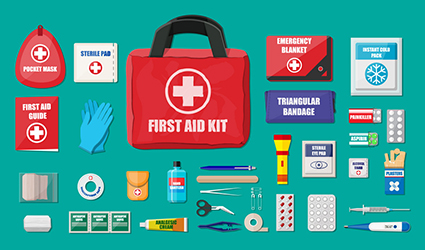ICU Ventilators and Syringe Pumps
August 9, 2018
Source: Ddu
 1,498
1,498

What makes first aid equipment such as ICU ventilators and syringe pumps so necessary? A healthy body is the premise for our normal state. However, due to unhealthy lifestyles, genetic issues or unpredictable accidents, we might end up in an emergency situation which requires immediate attention. Hence, under these circumstances, first aid equipment could be the key to saving a life.
From a hospital’s perspective, first aid equipment involves more than a kit of emergency tools such as bandages, scissors or medical alcohol, but also includes various types of professional devices including ICU ventilators and syringe pumps, which can handle more serious situations and provide further treatment. In this 2-part series, we here at Ddu (www.drugdu.com) the leading global pharmaceutical and medical devices B2B platform, will take the feedback we received from our first two aid equipment rallies as examples to demonstrate how to select your ideal products.
Ventilators used for intensive care serve as assistance to maintain patients’ breathing. It delivers respiratory gases to patients’ lungs at predetermined breathing rates with adaptive pressure. Before purchasing an ICU ventilator, consider the following factors:
- The ventilator should be equipped with SIMV modes.
- The ventilator should provide CPAP/PEEP and pressure support in regards to volume and pressure breaths.
- An oxygen analyzer should be included to monitor the oxygen or oxygen/air mixture.
- Audible and visual alarms which can respond to the monitor system during the whole treatment process.
- The control panel of the respirator should be clear and easy to handle.
- Fluid spills should be well controlled.
Syringe pumps are designed to deliver small quantities of concentrated drugs into a patient’s body over an extended period when necessary. It is equipped with a motor-driven mechanism to advance the plunger at a predetermined rate. To purchase a syringe pump, take the following factors into account:
- The requirements for infusion sets should be determined according to the annual consumption number of syringe pump infusions and the average duration within a facility.
- The flow rates of syringe infusion pumps should generally be adjustable with increments of 0.1ML/HR.
- Syringe pumps should be designed to accommodate varied syringe sizes up to 60ML.
- The syringe pumps should be equipped with an alarm system which can respond to various situations including the end of an infusion, high pressure, system malfunction, empty reservoir, syringe unlocked or low battery.
- The prime/purge control should be equipped.
- A needle-less connection should be provided for primary infusion set brands used by the syringe pump.
The importance of first aid equipment is obvious, resulting in the continuous growth of the market scale. However, due to various functions and high costs, a professional guideline is necessary before committing to a product. For this reason, Ddu (Drugdu.com), the global cross-border medical trade B2B e-commerce platform will continue to bring you more valuable tips of the trade.
Click here for more information about our hand-picked online first aid equipment rally.
By DduRead more on
- Disposable Medical Products that Keep Your Medical Facility Clean and Sterile March 31, 2022
- 10 Triumphant Drug Launches Of The Decade August 26, 2021
- Ultrasonic Nebulizer Market Views September 6, 2018
- 4 Best-Selling Digital Thermometers on Drugdu.com in 2018 September 5, 2018
- Don’t Miss These Tips before Your Cardiac Monitor Purchase September 5, 2018
your submission has already been received.
OK
Subscribe
Please enter a valid Email address!
Submit
The most relevant industry news & insight will be sent to you every two weeks.



